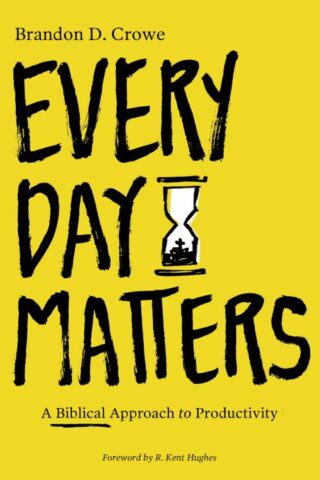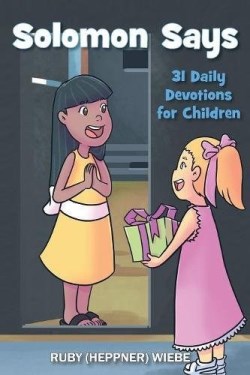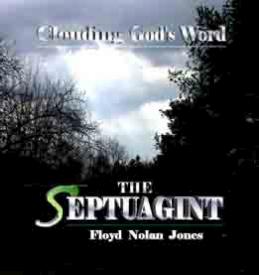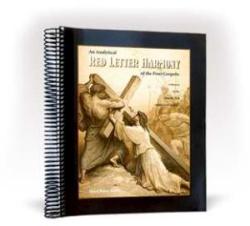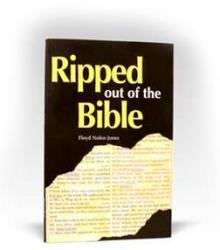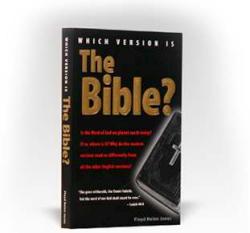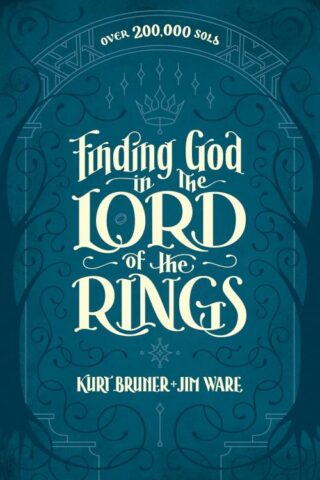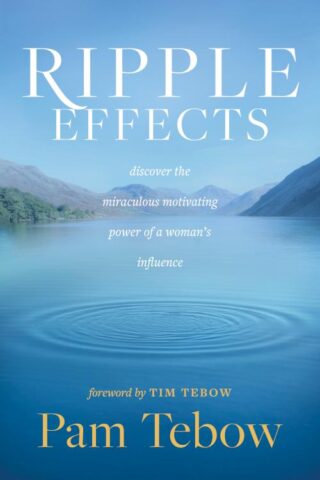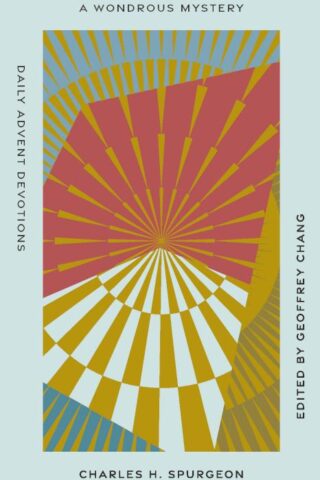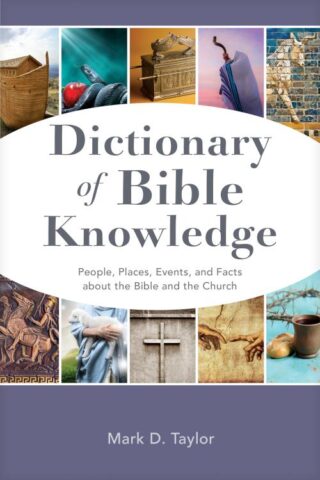Floyd Jones
Showing all 6 resultsSorted by latest
-
Analytical Red Letter Chronology Of The Life Of Christ
$19.95Add to cartThis study is for the student who wishes an uncluttered reference source, one free of distracting and often erroneous remarks, comments, personal judgments, etc.; one in which the footnotes lack faith ravaging references to supposed “scribal errors”, “emendations”, “restorations”, “corrections”, etc., in the Text or a supposed Synoptic problem (see Appendix A).
Toward that end, a “standard” harmony of the Gospels has been constructed which will address this subject in a Scriptural and scholarly, yet easy to understand, manner. To obtain optimal direct comparison capability, the computer word processor has been fully utilized so that key words in a given Gospel narrative may be placed alongside the same wording in the other Gospel accounts (a feature which was impractical heretofore). The computer also facilitated the inclusion of red lettering for the words of Christ. For these reasons, this “analytical” harmony will prove advantageous as a study aid over previous works such as Kerr’s (1903) and Robertson’s (1922), long held as standard references in the field.
-
Persian Problem
$17.98Add to cartThe methods of modern scholarship have undermined biblical historicity and the original intent of biblical writers. The Persian Problem highlights one of these key controversial areas.
A dilemma confronts all who would identify the Persian kings in Scripture and then synchronize them chronologically. This aspect of the “Persian Problem” has three parts.
First, the identity of the “Artaxerxes” mentioned in Ezra 6-7 and in Nehemiah. Persian history gives us little help because the Greeks and Muslims destroyed nearly all their records. In attempting to identify this king, scholars have forced the ages of Ezra, Nehemiah, and Mordecai to be much older. They “solved” this issue by subsequently “inventing” a second Ezra, Nehemiah, and Mordecai. However, this created a greater difficulty!
Most historians agree that Xerxes ascended the throne in 486 BC and that his son Artaxerxes I, or Longimanus, succeeded him, dying in 424 BC. However, with regard to biblical usage, the first year Longimanus was associated on the throne has not been correctly fixed! This shocking fact is the second part. Indeed, this date is a major key to Bible chronology!
Finally, there has been a failure to carefully compare the list of 31 priests and Levites returning with Zerubbabel (536 BC: Cyrus’ 1st year) in Nehemiah 12:1-9 with the 10:1-10 list. This oversight leads to a 91-year gap between the two rolls, creating a far greater age problem involving many more people than the Ezra, Nehemiah, and Mordecai issue! Moreover, the entire “Persian Problem” is convoluted. As the kings from Darius the Mede to Artaxerxes I are examined, an overview of neo-Babylonian history becomes necessary-and new problems surface.
While honoring all relevant Scripture, the work contained herein resolves all the above issues.
-
Septuagint : Clouding Gods Word
$12.98Add to cartMost of academia does not consider the Jewish Scriptures and the Old Testament portion of the Christian Bible to be one and the same. According to them, the original text of this part of God’s Word has been lost and is in need of “recovery.” To restore the original text, they maintain that the Hebrew Masoretic Text, the Samaritan Pentateuch, and the Septuagint must be compared.
The Septuagint (LXX) is an ancient translation of the Old Testament from Hebrew to Hellenistic Greek. This is almost the only hard fact concerning this translation that is truly verifiable. As the LXX is supposedly over 1,100 years older than the most ancient surviving Hebrew manuscripts, and as it often reads differently from them, text critics presume that the LXX was translated from an older, thus more reliable, Hebrew text.
Believing the LXX contains readings that have been lost or corrupted in the Hebrew Scriptures, critics hold that the Septuagint may be used in determined places to “correct and restore” these adulterated readings. Such is the status that the LXX holds in Old Testament text critical circles.
Indeed, one constantly reads that the Septuagint was “the” Bible of the early Christians. But-we wonder-is such veneration by academia justified? Does the New Testament frequently quote from the LXX instead of the Hebrew?
Rather than offering fanciful theories, this fresh critical analysis examines the above questions by presenting numerous side-by-side comparisons of the LXX Greek and Hebrew Masoretic text, as well as significant mathematical contrasts. This approach allows readers to discover the truth for themselves. The result will be surprising.
-
Analytical Red Letter Harmony Of Four Gospels
$22.88Add to cartReturn to the Historical Text (Authorized version)
An alarming expose’ documenting the reasons for the differences between the modern translations of the Bible and the historical translations of the Bible such as the 1611 King James Bible, and other older Bible versions. Numerous illustrations of these significant differences are presented, and the myth that the differences in modern versions are mainly due to synonym choices and language changes is dispelled.
The casting aside of the traditional Greek New Testament text which is the basis of the historic versions by Tyndale, Luther, Coverdale, and others is meticulously documented. Also carefully documented is the process which produced the radically different Greek text of the modern versions including an analysis of textual criticism. The completely unscientific basis of the methods of textual criticism are also exposed, and evidence that the traditional Greek text is actually much older than the newer critical text of the modern versions is presented. The work is carefully footnoted and includes a complete and comprehensive bibliography and index.
-
Ripped Out Of The Bible
$9.88Add to cartSee what is missing in the new translations of the Bible!
Did you know that the Greek New Testament text historically used down through the centuries by the believing Church has been cast aside and replaced by a radically different Greek text?
Nearly everyone has the impression that the difference in the wording between modern translations and the 1611 King James Bible is mainly due to synonym choices and language changes. Such is not the situation. The outrageous reason is that almost all translations since 1881 have been made from a drastically different Greek text than was used to prepare the older versions. The traditional Greek has been replaced!
Dr. Jones digs deep into the truth of God’s Word and separates the sheep from the goats. It allows us to see the outright deception that is happening all in the name of money. Don’t miss this opportunity to greater understanding of what Gods Word is and is not.
-
Which Version Is The Bible
$16.88Add to cartAn alarming expose’ documenting the reasons for the differences between the modern translations of the Bible and the historical translations of the Bible such as the 1611 King James Bible, and other older Bible versions. Numerous illustrations of these significant differences are presented, and the myth that the differences in modern versions are mainly due to synonym choices and language changes is dispelled.
The casting aside of the traditional Greek New Testament text which is the basis of the historic versions by Tyndale, Luther, Coverdale, and others is meticulously documented. Also carefully documented is the process which produced the radically different Greek text of the modern versions including an analysis of textual criticism. The completely unscientific basis of the methods of textual criticism are also exposed, and evidence that the traditional Greek text is actually much older than the newer critical text of the modern versions is presented. The work is carefully footnoted and includes a complete and comprehensive bibliography and index. By Floyd Nolen Jones

 Right People Right Place Right Plan Devotional
Right People Right Place Right Plan Devotional
 Apostles : The Fathering Servant
Apostles : The Fathering Servant



